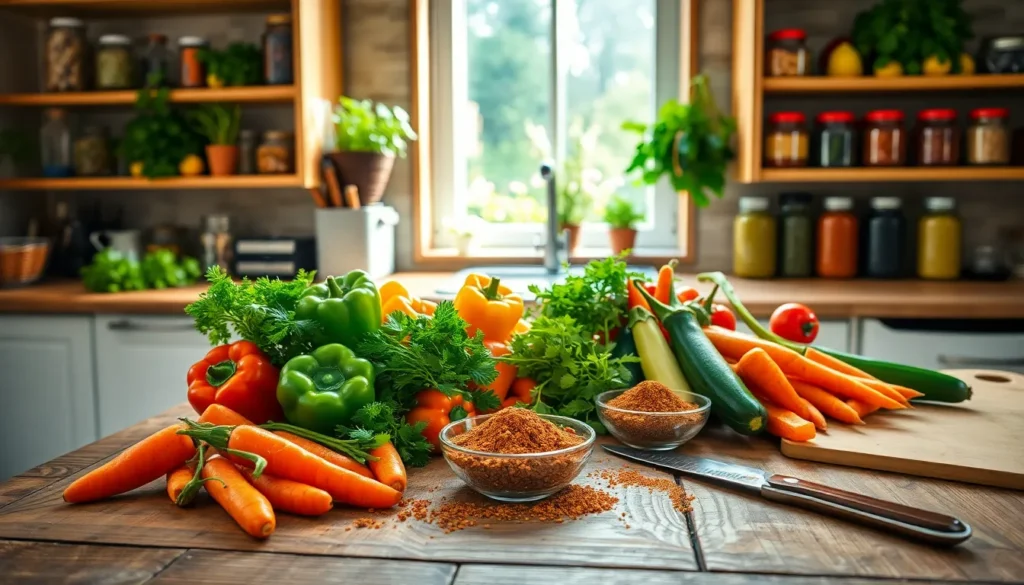Have you ever heard of Poziukri seasoning? If not, prepare to have your taste buds tantalized. This unique blend has the power to transform even the most mundane dishes into culinary masterpieces. Not only does it bring bold flavors to your table, but it also carries with it stories and traditions that make every sprinkle an adventure. Curious? Let’s jump into what makes Poziukri seasoning a kitchen hero.
Poziukri Seasoning

Poziukri seasoning is a vibrant spice blend that hails from Eastern Europe, known for its rich, earthy flavors. Typically, it combines essential herbs and spices such as garlic, paprika, and a medley of other aromatic ingredients. Each region boasts its unique twist on the blend, making it a fascinating culinary topic. Depending on where you find it, you might encounter hints of caraway or dill, adding to its allure. This versatility not only makes it a favorite among home cooks but also a staple in local restaurants that aim to spotlight authentic flavors.
Culinary Uses of Poziukri Seasoning
In the kitchen, Poziukri seasoning shines in a variety of dishes. It’s perfect for marinating meats, where its robust flavors seep into the proteins, creating intense taste sensations. Imagine grilled chicken or pork chops brushed with a mixture of Poziukri seasoning, olive oil, and lemon juice. The result? Perfectly seasoned meat, bursting with flavor.
Vegetable dishes also benefit from this seasoning. A sprinkle over roasted veggies elevates them from boring to breathtaking. It doesn’t stop there: Poziukri can even be used to add a zing to soups, stews, and sauces. Versatile and dynamic, this seasoning adapts well, making it a go-to for diverse culinary applications.
Origins and Cultural Significance
The roots of Poziukri seasoning are deep and intertwined with the cultural heritage of the regions it originates from. It embodies the essence of traditional cooking, often being passed down through generations. In many Eastern European households, the recipe for this blend varies, with each family adding their unique touch.
This seasoning does more than just flavor food: it carries stories of heritage and pride. It’s often associated with festive occasions, where families gather to celebrate their culinary traditions. In essence, it serves as a culinary bridge between generations, showcasing the importance of flavor and culture in their lives.
Health Benefits of Poziukri Seasoning
Beyond its delightful taste, Poziukri seasoning boasts several health benefits. Many of its core ingredients, like garlic and paprika, are recognized for their health-promoting properties. Garlic, for instance, is celebrated for its potential cardiovascular benefits, while paprika is rich in antioxidants.
Besides, cooking with spices like Poziukri can enhance digestion and boost metabolism. It allows home cooks to add flavor without unnecessary salt or fat, making it an excellent choice for health-conscious individuals. With each sprinkle, consumers can enjoy delicious meals that also contribute positively to their well-being.
How to Make Poziukri Seasoning at Home
Crafting your own Poziukri seasoning is not only rewarding but also quite simple. Start with the following blend of ingredients:
-
- 2 tablespoons garlic powder
-
- 1 tablespoon paprika
-
- 1 tablespoon dried onion flakes
-
- 1 teaspoon caraway seeds
-
- 1 teaspoon dill
-
- Salt and pepper to taste
Combine all the ingredients in a bowl and mix until well-combined. Store in an airtight container for up to six months. The beauty of a homemade seasoning blend lies in its flexibility: feel free to adjust the ratios or swap out spices according to your personal preference. Enjoy creating your custom flavor profile.
Tips for Using Poziukri Seasoning in Cooking
Using Poziukri seasoning effectively requires a bit of finesse. Start small: it’s easier to add more seasoning than to take it away. For meats, rub the seasoning onto the surface and let it marinate for a couple of hours or overnight for deeper flavor absorption.
When using it in dishes like stews or soups, add it early in the cooking process to allow its flavors to meld beautifully with the other ingredients. If you’re using it for roasted vegetables, mix it with olive oil before tossing your veggies to ensure even coverage. Most importantly, trust your palate: if a dish needs more flavor, don’t hesitate to sprinkle on a bit more.

